#parallaxbackground
Video
youtube
(via Divi: Unlocking the Potential of Parallax Image Backgrounds for Beginners)
Unlock the creative possibilities of your website with our latest blog post, "Divi: Unlocking the Potential of Parallax Image Backgrounds for Beginners." In this comprehensive guide, we demystify the process of incorporating captivating parallax image backgrounds into your Divi-powered site. Whether you're new to web design or a seasoned developer, this tutorial provides a beginner-friendly roadmap to elevate the visual appeal of your website.
0 notes
Video
Parallax test and landscape WIP.
2 notes
·
View notes
Text
AMOLED display phones Review
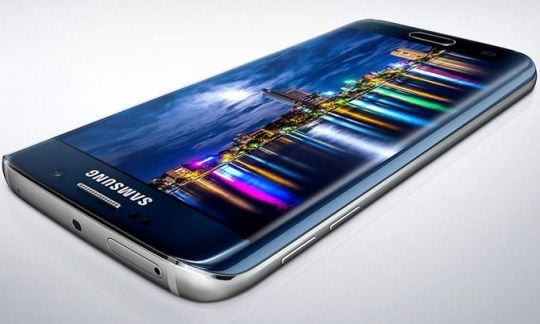
Of course, a modern smartphone is one of the most complex electronic devices that uses a large number of complex components. Their technical characteristics directly affect the functionality and, as a result, the choice of the optimal model. This list includes the number and set of cameras in multi-camera smartphones and specs on main camera, smartphone performance and smartphone storage, operation system, etc.
Of course, the display is one of the main components. But its specs, service life and safety for vision depend on the matrix type. All modern TVs and smartphones use AMOLED (Active Matrix Organic Light-Emitting Diode) or LCD screens.
As known, the first light-emitting p-phenylene vinylene (or PPV, or polyphenylene vinylene) polymer was synthesized in the Cavendish Laboratory of the University of Cambridge in 1989. Already in 1992, Cambridge Display Technolodgy (CDT) was established to produce polymer light-emitting materials.
In 2004, Samsung introduced the first X120 phone with an OLED screen.
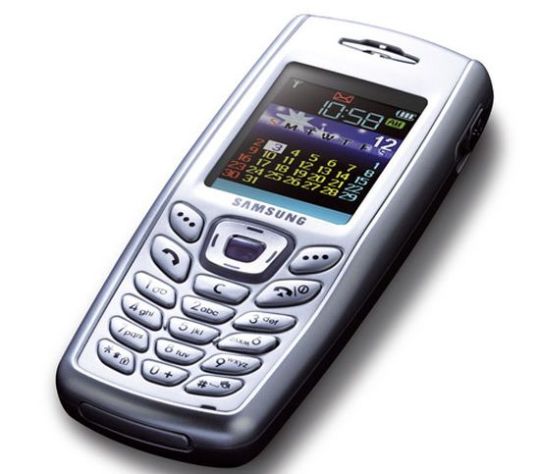
In August 2008, Nokia introduced the N85 with an AMOLED display.
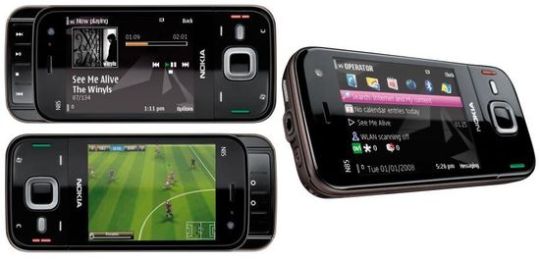
As known, OLED matrices (Organic light-emitting diode) use multilayer organic polymers that emit light under the influence of an electric current. Accordingly, they do not require backlighting. This factor is their main difference from traditional LCD technology. Today, all companies use OLED matrices with Active Matrix only and are called AMOLED (Active Matrix Organic light-emitting diode). In the TVs segment, companies continue to use OLED abbreviation without adding AM.
Pros & Cons
Pros
- perfect black due to lack of backlight provides almost endless contrast (2,000,000: 1 and above);
- large viewing angles eliminate color distortion even when viewing at an angle;
- PWM (pulse-width modulation) provides a wide range of brightness and very accurate color reproduction;
- smaller dimensions and weight;
- instant response due to lack of inertia;
- the ability to create flexible screens;
- wide range of operating temperatures from −40 to +70°C.
Cons
- high price;
- screen flicker due to PWM increases eye strain;
- low maximum brightness;
- high sensitivity to moisture;
- slight purple hue due to the eye’s reaction to the blue subpixels.
- the limited service life of the blue phosphor due to its chemical characteristics violates the color balance after several years.
The service life of green diodes reaches 130,000 hours, red - 50,000 hours, blue - only 15,000 hours. Of course, this problem significantly reduces the competitiveness of AMOLED vs LCD.
PenTile, Pixel Shifting and parallax backgrounds
Today, companies use several basic ways to solve this problem.
PenTile (penta + tile) technology integrates a family of proprietary sub-pixel configurations in electronic displays. It was developed in the early 1990s. This method uses the placement in a staggered manner of the five subpixels in each pixel, including two red, two green, and one central blue.
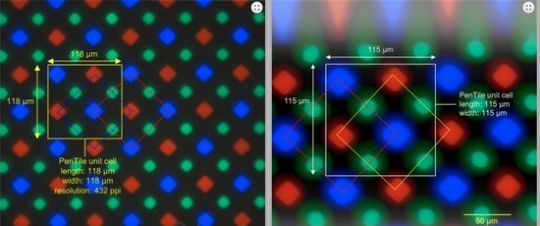
It is based on the characteristics of the retina of the human eye, which contains S (short)-cones, M (medium)-cones and L (long)-cones. Wherein, the number of S-cones significantly exceeds the number of M and L-cones. As known, S-cones provide recognition of blue color. Moreover, blue color almost does not affect the perception of brightness.
In March 2008, Samsung Electronics acquired PenTile from Clairvoyante and funded Nouvoyance, Inc. to continue developing this technology.
Technologically, PenTile adds subpixels to the device matrix. Modern smartphones use RGBG (additional green sub-pixel) or RGBW (additional white sub-pixel).
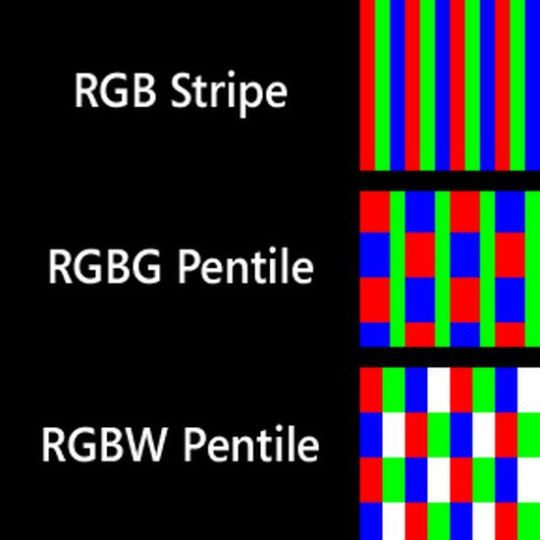
RGBG provides provides constant brightness while reducing the number of subpixels by 1/3 due to the high perception of green by the human eye. Today AMOLED, Super AMOLED and Super AMOLED HD often use this configuration.
RGBW increases brightness without increasing power consumption and is commonly used in LTPS matrices.
PenTile technology allowed Samsung to use half as many blue and red subpixels compared to green. Moreover, the most powerful blue diodes operate at half power, saving a resource. It increases their service life, and all subpixels burn out evenly.
Pixel Shifting software algorithm shifts the image by 1 pixel for a prolonged static image.
Recently, Google and Apple often use parallax backgrounds, preventing a static image on the screen.

AMOLED technology
Like LCD, AMOLED matrices use TFT technology. Each pixel uses its own transistor and capacitor for control. AMOLED technology has no size restrictions and is used for 10-inch screens and more.
Super AMOLED is an improved version of AMOLED. They do not have an air gap between the touch layer of the screen and the matrix. In this case, the engineers integrated the sensor layer directly into the screen instead of its surface.
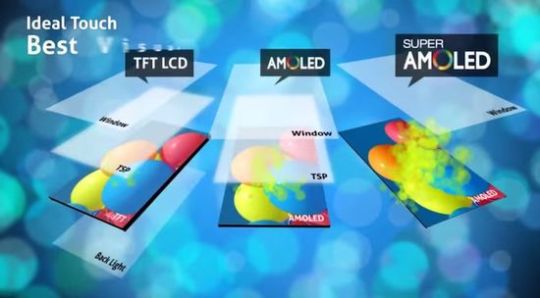
As a result, these screens are thinner, have less power consumption, provide absolute dust protection, a wider saturation of colors and a better image in direct sunlight. Unfortunately, they are more expensive compared to traditional AMOLED screens, and have high image grain due to the use of PenTile RGBG.
A similar technology in IPS matrices is called OGS (One Glass Solution).
Super AMOLED Plus and HD Super AMOLED differ only in the number of sub-pixels and, accordingly, size.

P-OLED matrices use a plastic screen backing instead of a glass. In addition to the traditional pros of OLED technology, this solution provides several additional advantages, including the ability to change the form factor of screens (flexible displays).
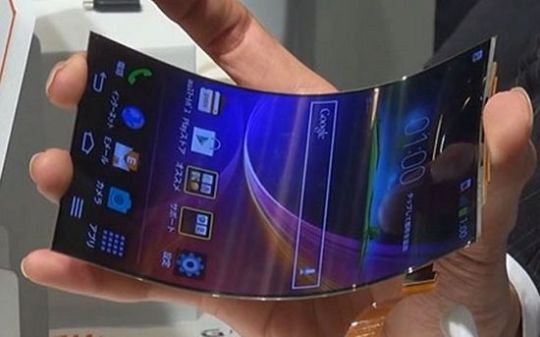
Samsung's latest Dynamic AMOLED version in Galaxy S10 5G is Super AMOLED with HDR10 support.
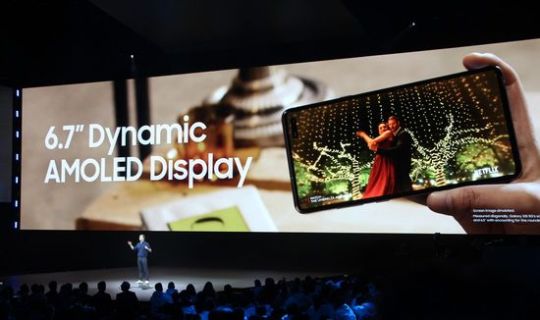
In addition, they form a less intense blue, which reduces eye strain and increases screen life.
Conclusion
In general, we can state the rapid development of AMOLED technology. Despite the higher price, AMOLED successfully competes with LCD displays, including Retina. Apparently, Samsung will continue to lead in this segment. But its success will significantly depend on the pricing strategy. In comparison, LG, the leader in the OLED TVs segment, has already offered the gorgeous 65-inch LG OLED C9 PUA for less than $ 2,500, which seemed unrealistic just a couple of years ago. It can be assumed that Samsung will also make efforts to lower the price of AMOLED screens.
This video shows a comparison of the iPhone 7+ with Retina LCD Display vs Samsung Galaxy S7 with Super Amoled.
Read the full article
#ActiveMatrixOrganiclight-emittingdiode#AMOLED#AMOLEDdisplayphones#dynamicAMOLED#GalaxyS105G#HDSuperAMOLED#OGS#OneGlassSolution#P-OLED#parallaxbackgrounds#PenTile#pixelshifting#RGBG#RGBW#superAMOLED
0 notes
Photo
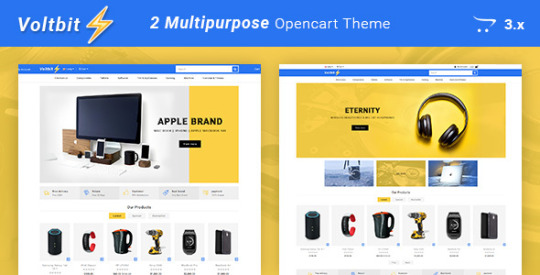
Download Voltbit - Multipurpose Responsive Opencart 3 Theme on themeforest
Description Voltbit - Multipurpose Responsive Opencart 3 Theme :
Download Voltbit - Multipurpose Responsive Opencart 3 Theme. The Theme releases on Thursday 20th September 2018 By The Author lionode on Themeforest. It’s makes use of for equipment,bag,bag retailer,beauty,electronics,vogue,vogue theme,mega retailer,Multipurpose theme,responsive,sneakers,sportswear,sun shades,watch retailer. Theme Title: Voltbit - Multipurpose Responsive Opencart 3 Theme Category: ecommerce/opencart Price: $48 Author: lionode Published Date: Thursday 20th September 2018 06:07:35 PM More Info / DownloadDemo
Voltbit Multipurpose Responsive Opencart Theme Specially Design For the E-commerce Store like Electronics. You can simply current your concepts with excellent fashionable. nicely commented html and css code for consumer pleasant. Fully responsive and appropriate with all newest browser. This OpenCart Theme is wanting good with contemporary colours mixture. It comes with extraordinarily stunning design for your small business web site. It comes with 2 superb pre-constructed websites
Responsive design
HTML5 + CSS3
Based on Bootstrap 3
Feature Category slider with picture
Custom Fonts
Cross-browser Compatibility
Full Responsive OpenCart Theme
Special Product Count down
Feature Product Slider
New Product Slider
Special Product Slider
Bestseller Product Slider
Newsletter Module With Popup
ProductQuick View Options
Blog Module
Testimonial
Rollover Product Image
Smooth ParallaxBackgrounds CMS
Product Image Cloud Zoom impact
Ajax Live Search Module
Custom Payment Icons
Social Media integration
Multi language
Multi foreign money
Unlimited CMS Block
Grid or List View
Unlimited Banners + Sliders
Megamenu With Fix Header
Products Pagination
Grid/List Switcher
Easy-to-use and straightforward-to-customise
Well Documentation
Valid HTML and CSS markup
Free updates
web optimization Optimized
And many extra…
Note Some photos are simply used for preview goal solely and NOT included within the ultimate buy files. More Info / DownloadDemo #Voltbit #Multipurpose #Responsive #Opencart #Theme
#accessories#All_Theme_amp_Template#bag#bag_store#cosmetic#ecommerce_theme#ecommerce_Weekly_bestsellers#electronics#fashion#fashion_theme#mega_store#Multipurpose_theme#responsive#shoes#sportswear#sunglasses#Theme_amp_Template_Weekly_bestsellers#watch_store#Weekly_bestsellers
0 notes
Text
AMOLED vs LCD displays in phones
A modern smartphone uses a large number of complex components, including main camera and several additional cameras in multi-camera smartphones, chipset, RAM and ROM, operation system, etc. Their specs directly affect the functionality and, as a result, the choice of the optimal model.
But of course, the display is one of the main components. Its specs, service life and safety for vision depend on the matrix type. All modern TVs and smartphones use AMOLED (Active Matrix Organic Light-Emitting Diode) or LCD screens.
As known, before the invention of OLED technology, LED LCD displays dominated the market. The first light-emitting p-phenylene vinylene (or PPV, or polyphenylene vinylene) polymer was synthesized in the Cavendish Laboratory of the University of Cambridge in 1989. Already in 1992, Cambridge Display Technolodgy (CDT) was established to produce polymer light-emitting materials.
But the fierce competition between them began only in the 21st century, provoking their rapid development.
LCD
As known, LCD (Liquid Crystal Display) technology uses fluidity and anisotropy of crystals. In fact, they perform the function of a light filter, forming a pixel of the desired color on the screen surface. Of course, this technology requires a backlight that uses LEDs.
In February 2011, Samsung introduced the first QLED display with improved LED backlighting on quantum dots. In fact, engineers added an LED panel instead of traditional cold cathode fluorescent tubes.
This technology has significantly expanded the color gamut of the matrix. Further, other companies developed their own technologies based on this idea. Today they use their own marketing names, including NanoCell from LG, Triluminos from Sony and ULED from Hisense.
In parallel, companies developed backlight technology. As a result, FALD (full-array local dimming) backlighting was developed.
Today, experts expect LCD with innovative miniLED-based backlighting. Unlike traditional backlighting, the size of its diode modules does not exceed 100 microns.
The reduction in size promises to drastically reduce energy consumption, increase contrast and color accuracy by increasing the number of local dimming zones. TVs already use this technology.
For example, TCL announced 8-series MiniLED Roku TV with 1,000 local dimming zones. In comparison, today the best expensive LCD TVs use no more than a few hundred. This technology promises to bring the quality of LCD screens closer to AMOLED. Some experts were expecting these smartphones in 2019. Unfortunately, their hopes did not materialize.
OLED
OLED matrices (Organic light-emitting diode) use multilayer organic polymers that emit light under the influence of electricity and do not require backlighting. In fact, it's the main difference between these technologies. All modern phones use only AMOLED (Active Matrix OLED) matrices with Active Matrix. But in the TV segment, companies continue to use the acronym OLED without adding AM.
In the summer of 2009, LG announced the first 15-inch OLED TV. A few years later, at CES 2012, Samsung and LG introduced 55-inch OLED TVs. At IFA 2013, LG has already announced the world's first 77-inch 4K OLED TV.
At CES 2013, Samsung announced the Galaxy S4 with 5 "Super AMOLED Full HD panel. In the second half of 2014, Samsung Display began production of AMOLED flexible panels.
Modern models already use AMOLED, Super AMOLED, HD Super AMOLED, Dynamic AMOLED and P-OLED matrices.
MicroLED (mLED or μLED or ILED)
MicroLED is the next step in the development of OLED technology. Like OLED, MicroLED uses subpixel LEDs with its own radiation and does not require backlighting. But as a light-emitting material, OLED uses sm-OLED (Small Molecule-Organic LED), POLED, or PHOLED (phosphorescent OLED). MicroLED uses inorganic GaN (gallium nitride) with a size of only 5-10 microns, which is its main advantage.
The new technology has great prospects. In particular, high light output can drastically reduce energy consumption to about 10% LCD and 50% OLED displays, and the miniature size will allow companies to achieve pixel densities of up to 1,500 PPI, providing huge resolution even for large matrices.
In 2018, Apple announced plans to produce MicroLED panels. But in 2019, serial microLED displays did not appear on the market. However, Sony and Samsung are already selling microLED The Wall.
OLED advantages
1. As known, contrast characterizes the ratio brightest white to the darkest black pixels on the screen and is measured in the ratio of "maximum brightness" / 1. Thus, a screen with a contrast ratio of 1000: 1 displays white 1000 times brighter than black.
But in the OLED display, black color corresponds to a completely off diode with a brightness of "0". Therefore, companies often use the term "Infinite contrast", although, as you know, mathematics prohibits the division by "0". Sometimes companies indicate 2,000,000: 1 and above, which is probably more correct.
Unfortunately, LED backlight in the LCD screen fundamentally eliminates the perfect black.
2. Smartphones with OLED screens support Always On-Display mode. In this case, the smartphone’s display can display information by controlling individual pixels. This mode provides a significant reduction in energy consumption when choosing interface in dark colors.
But black color of the IPS matrix corresponds to the on backlight, which we do not see due to the light wave damping by the second polarizer. Thus, the IPS matrix cannot provide this useful option because its backlight constantly illuminates the matrix.
3. As known, the image brightness decreases when viewed at an angle. For example, the brightness drop in smartphones with IPS-screen reaches 55% for an angle of 30 degrees. For comparison, brightness reduction of the OLED screen at the same angle does not exceed 25%.
4. The absence of a backlight in OLED screen eliminates problems with its uniformity. Unfortunately, it's relevant for the IPS screen. Typically, companies place backlight diodes along the bottom edge of the IPS screen. During operation, their light passes through a special flexible diffuser made of a thin film. Unfortunately, many LCD screens display a brighter bar at the bottom of the screen near the diodes.
LCD advantages
1. IPS-screen is much cheaper than OLED-analogue, including repair.
2. Almost all OLED screens have problems with Screen burn-in.
The service life of green diodes reaches 130,000 hours, red - 50,000 hours, blue - only 15,000 hours.
However, today companies successfully solve this problem using PenTile. For example, PenTile technology allowed Samsung to use half as many blue and red subpixels compared to green. Moreover, the most powerful blue diodes operate at half power, saving a resource. It increases their service life, and all subpixels burn out evenly. Typically, companies use RGBG (additional green sub-pixel) or RGBW (additional white sub-pixel).
Today AMOLED, Super AMOLED and HD Super AMOLED often use this configuration.
On the other hand, 15,000 hours of service life for blue diodes corresponds to more than 5 years of operation, even with heavy use. Most people change models more often.
In addition, static displaying for a long time at maximum brightness may form a residual image on the screen. But Pixel Shifting and Parallax Backgrounds successfully solve this problem.
Pixel Shifting software algorithm shifts the image by 1 pixel for a prolonged static image. Recently, Google and Apple often use parallax backgrounds, preventing a static image on the screen.
3. Screen flicker due to PWM in OLED screen increases eye strain. As known, the diode brightness depends on the current strength. With its increase, it gradually rises. Unfortunately, the decrease in brightness does not occur smoothly. Instead of smooth dimming, the diodes begin to work with small pauses. For example, diodes burn 0.9 ms for 1 second at 100% brightness. But at 50% brightness, these LEDs only work for 0.45 ms for 1 second. Of course, this flicker significantly increases the load on the eyesight, causing discomfort in the eyes.
Brands
Today, budget and mid-budget Android, and Apple, mainly use LCD displays. This list includes:
- iPhone 11;
- iPhone XR;
- Honor 20/20 Pro;
- iPhone 8/8 Plus, iPhone 7/7 Plus;
- Xiaomi Redmi Note 7;
- Huawei P30 Lite.
AMOLED screens are used on almost all flagships and even on mid-range smartphones. This list includes:
- the entire line of Samsung Galaxy S-series, Note-series, etc;
- iPhone 11 Pro / 11 Pro Max, iPhone XS / XS Max and iPhone X;
- Huawei flagships (P30, Mate 30);
- Xiaomi flagships (the entire line of Mi 9, etc.);
- Sony Xperia XZ3 and Xperia 1.
Conclusion
In general, the trend clearly demonstrates the rapid convergence of technology. The active use of effective innovative technologies has ensured the convergence of consumer qualities of models with AMOLED and LCD matrices. Of course, AMOLED retains a slight advantage in image quality, but LCD successfully compensates for it due to price.
Today we can assume the direction of their further improvement. Apparently, the market will soon offer LCD screens with miniLED-based backlighting. In the segment of OLED technology, MicroLED displays have good prospects over time to replace modern AMOLED screens. In this case, LCD with miniLED will compete with MicroLED in the next step.
This video shows the 75-inch and 219-inch Samsung Micro LED Modular TVs at CES 2019.
Read the full article
#ActiveMatrixOrganiclight-emittingdiode#AlwaysOn-Displaymode#AMOLEDvsLCDdisplays#dynamicAMOLED#FALD#HDSuperAMOLED#MicroLED#miniLEDbacklight#NanoCell#P-OLED#parallaxbackground#PenTile#pixelshifting#QLED#superAMOLED#Triluminos#ULED
0 notes